Error E3 on Midea dishwasher
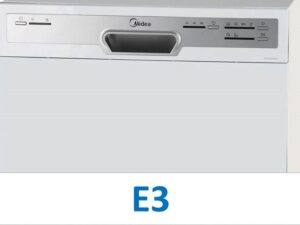 The E3 error that appears on the Midea PMM display paralyzes the operation of the device. The dishwasher freezes and cannot complete the cycle. This fault code can be triggered by various problems, ranging from a broken pressure switch to a damaged control module. Where to start diagnostics? Which reason is more typical for dishwashers? Let's look into the nuances.
The E3 error that appears on the Midea PMM display paralyzes the operation of the device. The dishwasher freezes and cannot complete the cycle. This fault code can be triggered by various problems, ranging from a broken pressure switch to a damaged control module. Where to start diagnostics? Which reason is more typical for dishwashers? Let's look into the nuances.
Explanation and list of problems
What to do if you find your Midea dishwasher frozen? First, you should decipher the error code by looking at the instructions for the equipment. E3 is displayed if, after 60 minutes, the water temperature in the system does not reach the desired degree.
For example, a program has been launched that requires washing at 65°C. If the water does not warm up to the set temperature within a certain time, the machine will display error E3. Why might this happen?
Most often, error E3 indicates a malfunction of the dishwasher heating element.
Other possible causes of the error code: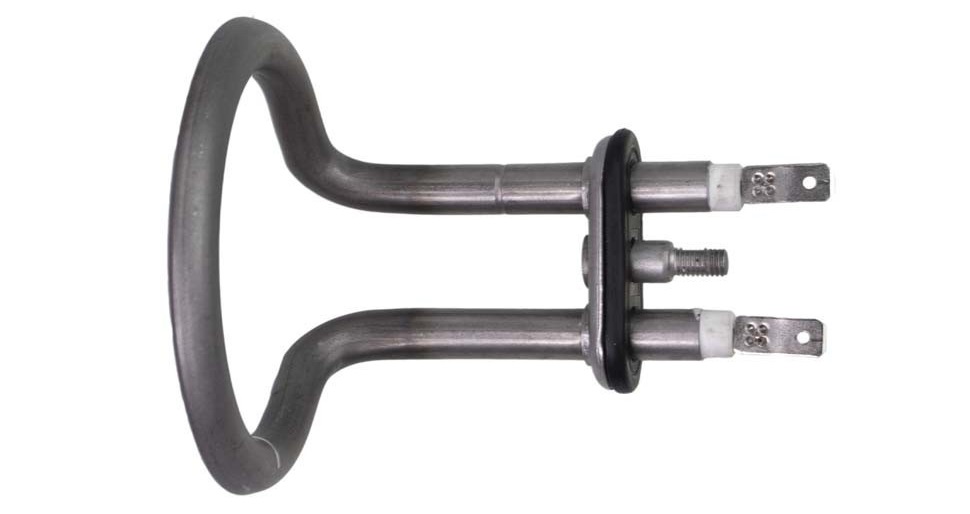
- damaged temperature sensor (the water is hot, but the thermistor sends incorrect information to the “brain”, which causes the PMM to stop working);
- broken pressure switch (in this case, the machine may take in more water than required by the program, and the heating element simply will not have time to heat it);
- a break in the control circuit of the heating element (the wires may have come loose or the contacts have oxidized);
- incorrectly functioning control module.
According to statistics, in 85% of cases the E3 error is caused by a non-working heating element. The quality of tap water in many regions of Russia leaves much to be desired. The scale that forms on the heating element leads to its breakdown.The temperature sensor suffers much less frequently, approximately 6%.
Checking and replacing the heating element
If your Midea dishwasher does not heat the water, you will have to check the heating element. The heater is installed in the lower part of the PMM housing. To get to the element, you will need to partially disassemble the dishwasher.
The algorithm of actions will be as follows:
- Turn off the power to the device by unplugging the power cord from the outlet;
- turn off the tap responsible for supplying water to the machine;

- unhook the drain and inlet hoses from the machine;
- open the door and remove the dish baskets from the working chamber;
- remove the garbage filter;

- lay the dishwasher on its side;
- Having dealt with the latches, remove the tray of the Midea dishwasher;
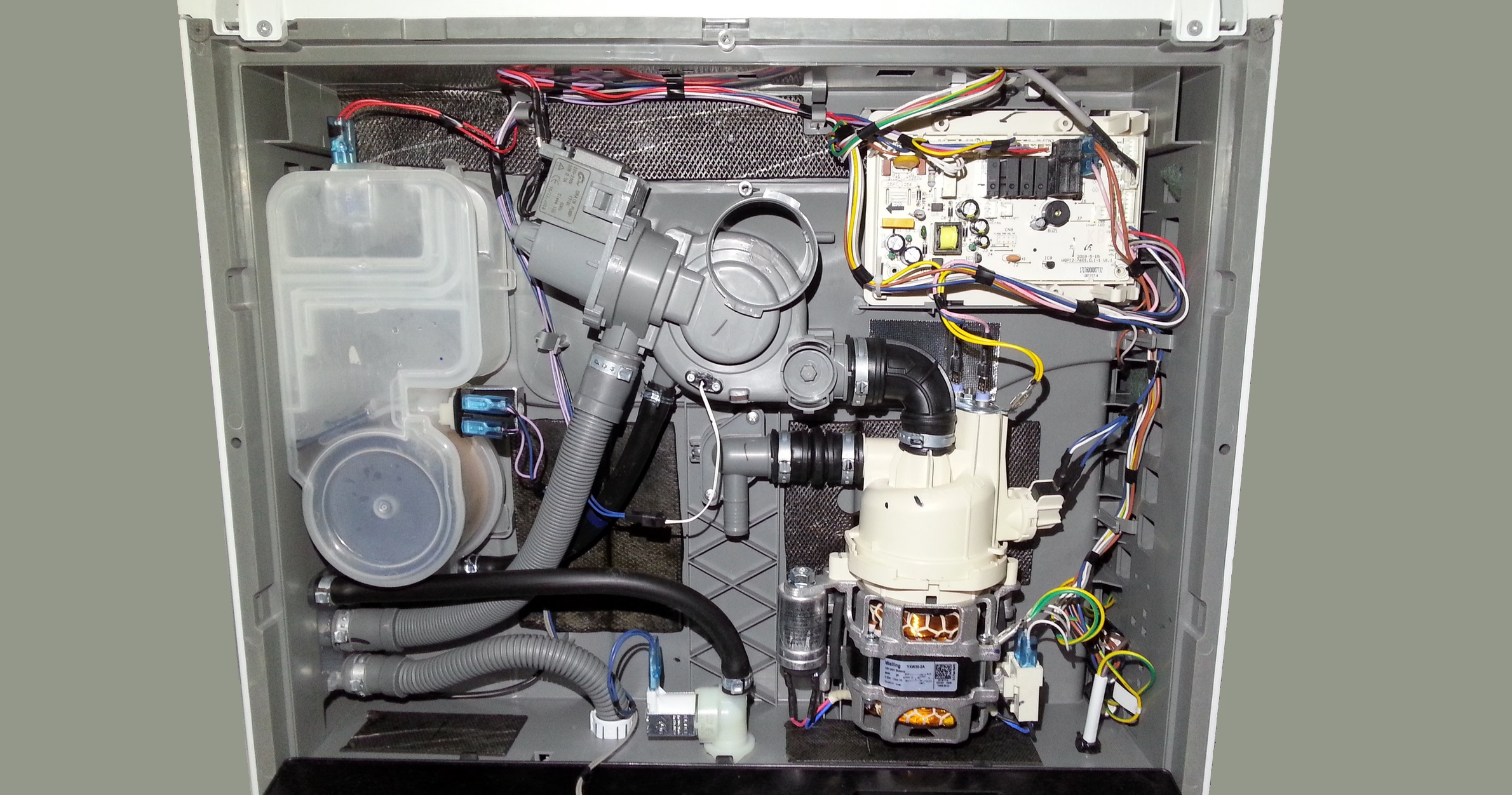
- disconnect the supply wiring from the heating element;
- switch the multimeter to resistance measurement mode;
- place the multimeter probes against the contacts of the heating element;
- evaluate the readings on the tester screen.
Normally, the heating element should produce a resistance within 21-23 Ohms. If the element is faulty, the multimeter will show either 0, 1, or a value tending to infinity. A burnt-out heater cannot be repaired; it will need to be replaced.
The heating element in dishwashers is located in the same housing with the recirculation pump. To replace the heater, it is necessary to remove the structure from the PMM housing. On one side the unit is secured with a bracket, on the other it is screwed to the pipe.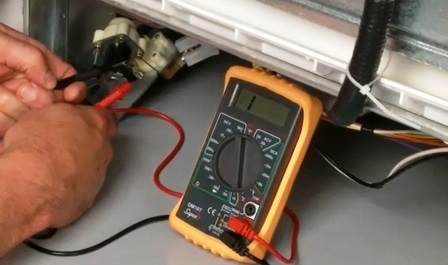
Next, all that remains is to remove the plastic snail, dismantle the damaged heating element and install a new heater. During the assembly process, make sure that the sealing rubber is in place, otherwise leakage cannot be avoided.
When finished, install the recirculation pump together with the heating element in its original place. Connect the pipes and tighten them with clamps. Connect the power supply.
After this, you need to return the dishwasher tray to its place and place the machine vertically. Then the test cycle starts, without any dishes in the chamber. If you managed to reset E3, then the repair can be considered complete.
It happens that during the test the heating element turns out to be working. Then pay attention to his chain. It may be enough to repair the wiring or clean the oxidized contacts. Then you will be able to do without replacing the heater.
Rarely, the cause of error E3 is a faulty temperature sensor. In this case, the water in the chamber heats up - this can be checked by carefully sticking your hand into the hopper. The thermistor cannot be repaired; the element will need to be replaced.
The control module has failed
If the electronic unit breaks down, the Midea dishwasher can display any error code, including E3. Not everyone can diagnose the control module - this work requires certain knowledge and skills. You can inspect the board yourself - sometimes defects are visible to the naked eye.
An electronic module controls the operation of all components of the Midea dishwasher.
The control unit gives commands for dialing, heating, and draining liquid. The module receives information about the water level in the bunker and its temperature. When any semiconductor on the board fails, the operation of the dishwasher stops. Usually, replacing the damaged element helps clear the error.
To inspect the microcontroller, you must: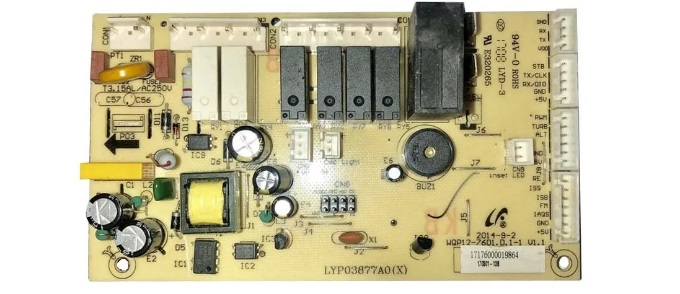
- turn off the power to the Midea dishwasher;
- close the shut-off valve;
- open the PMM door;
- Unscrew the screws located around the perimeter of the door;
- remove the top of the door.
After removing the PMM door, you will see the control board. Carefully inspect the module for defects: burns, rust, swelling.If the unit looks working from the outside, it will require in-depth diagnostics - each semiconductor is checked with a multimeter.
If the damage is minor, then repairing the module will help eliminate the error. Usually, either the damaged semiconductor is replaced, or the oxidized contacts are cleaned, or the tracks are restored. In severe cases, a complete replacement of the electronic unit will be required.
It will not be possible to operate a dishwasher with error E3 - the machine will continue to freeze in the middle of the cycle. Usually, replacing the heating element helps reset the code. However, before purchasing new spare parts, perform diagnostics on the PMM. The cause may be a faulty thermistor or damaged control module.
Interesting:
Reader comments
- Share your opinion - leave a comment


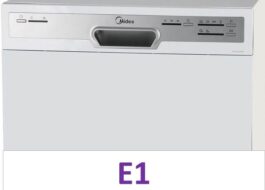


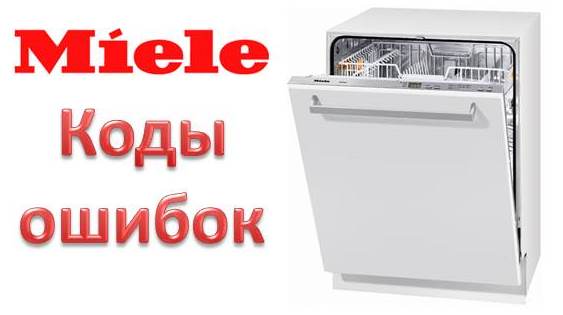















Add a comment